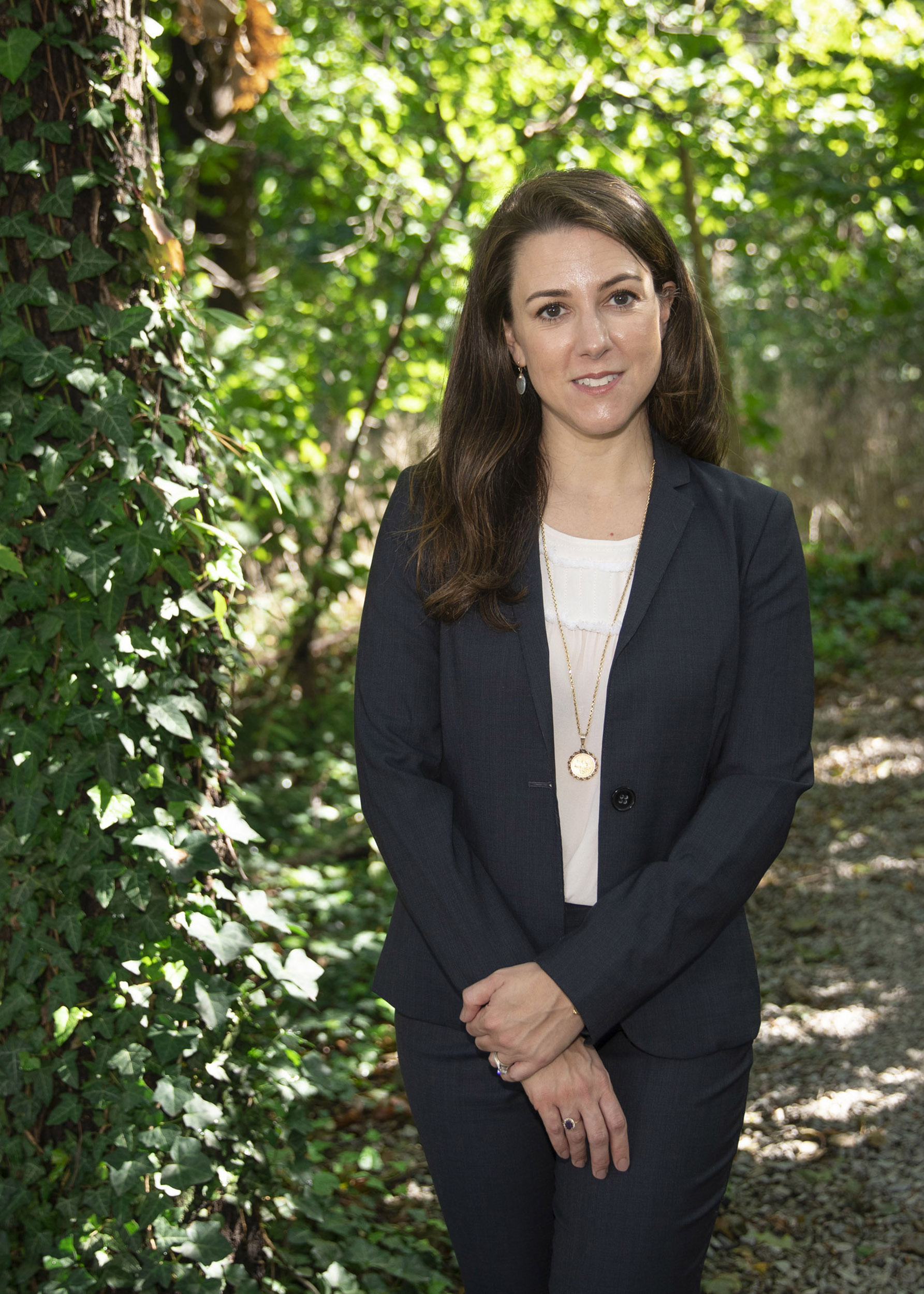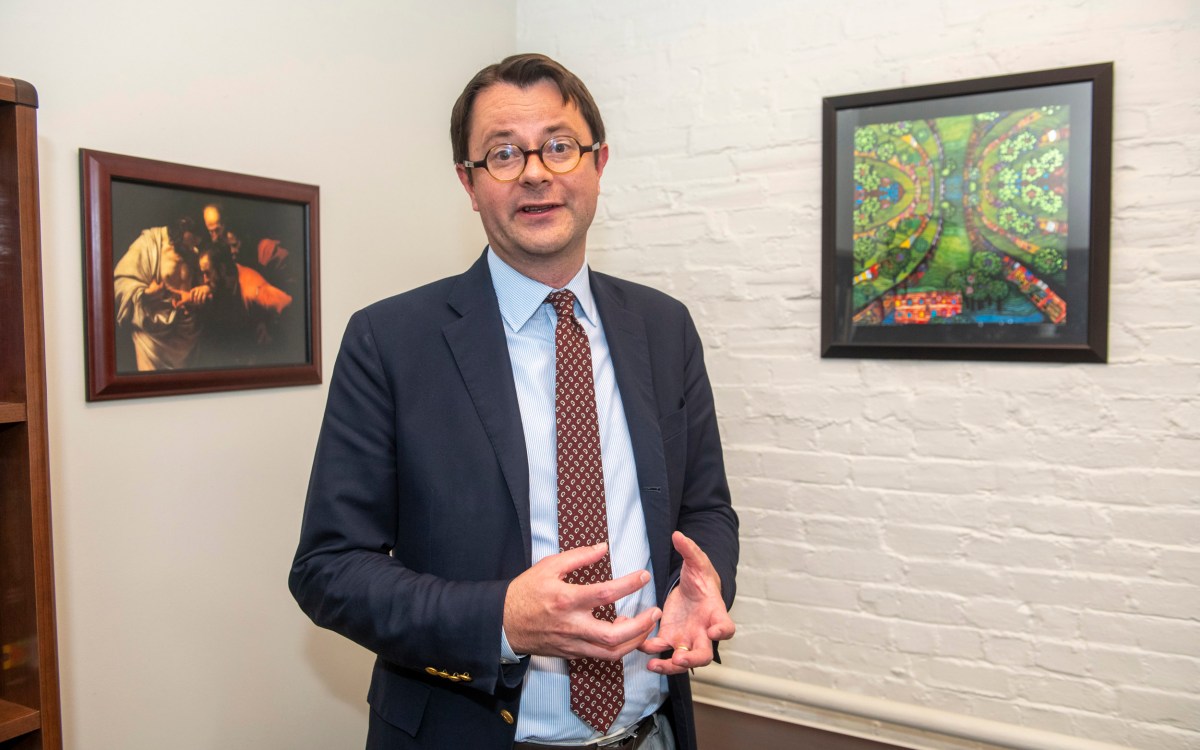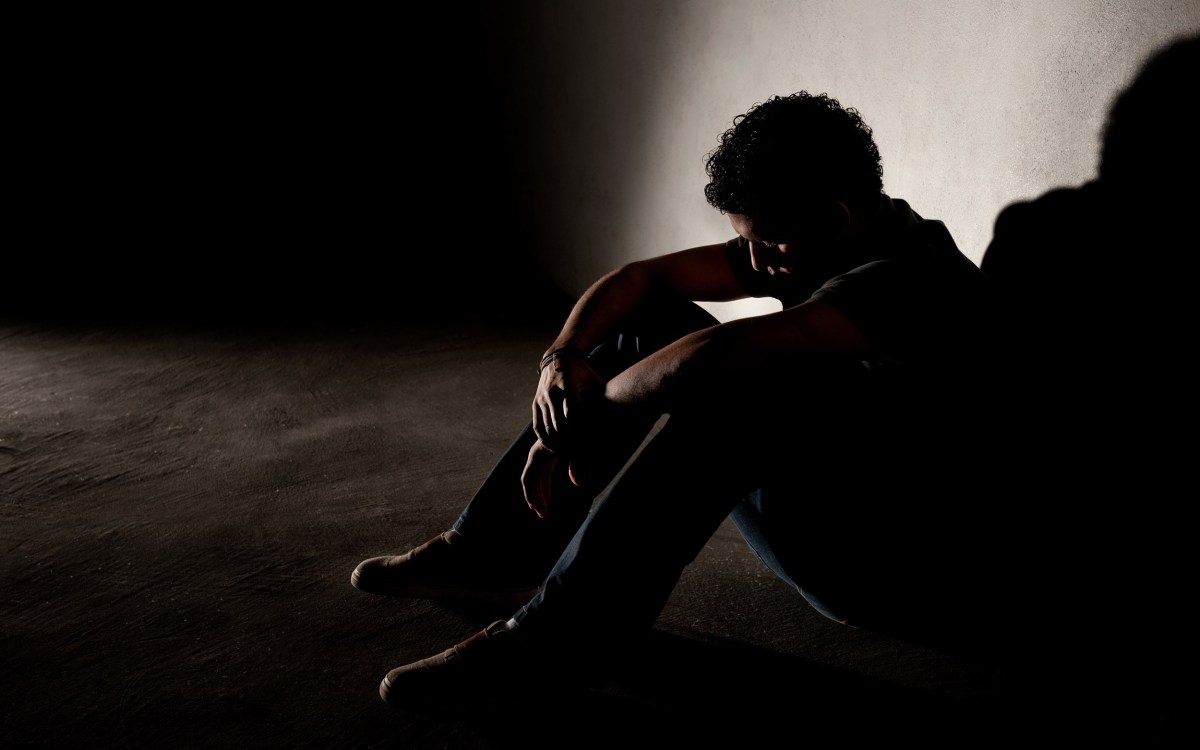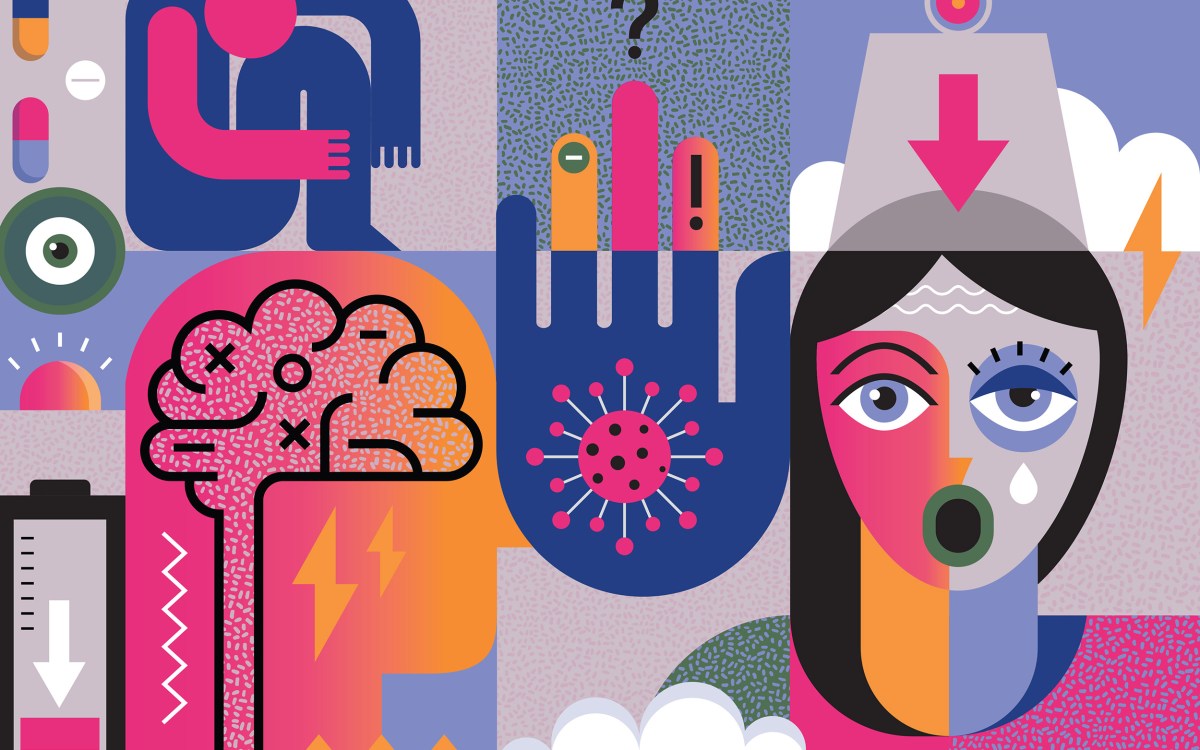Building ‘bravery muscles’ to fight rising anxiety among kids
Harvard psychologist Elkins says pandemic worsened trend and screening, early intervention key to avoiding bigger problems

R. Meredith Elkins is co-director of McLean Hospital’s Anxiety Mastery Program, which treats children ages 6 to 19.
Kris Snibbe/Harvard Staff Photographer
Amid the ongoing mental health crisis among America’s youth, the U.S. Preventive Services Task Force issued a draft recommendation earlier this year that physicians begin screening children as young as 8 for anxiety. R. Meredith Elkins, an instructor in psychology in Harvard Medical School’s Psychiatry Department and co-director of McLean Hospital’s McLean Anxiety Mastery Program, which treats children ages 6 to 19, said enhanced screening will allow kids access to proven, effective treatments, while ignoring it can cause the condition to worsen and lead to other mental health ills. She also notes that a complicating factor in this problem, as well as the nation’s overall dilemma, is the current shortage of youth mental health care providers. Interview was edited for clarity and length.
Q&A
R. Meredith Elkins
GAZETTE: I think most people think of anxiety as a problem for adults. How big a problem is it among younger people?
ELKINS: Taken together, anxiety disorders are the most common class of mental health condition in children and adolescents. It is important to differentiate normative anxiety, which is an adaptive, natural response to threats to one’s life or well-being, from anxiety that is longstanding, significantly interfering in daily life, and causing substantial distress. When you consider those criteria, unfortunately, many kids will meet diagnostic criteria for one or more anxiety disorders. Given how common these concerns are in young people, I definitely feel that screening is appropriate.
GAZETTE: Is childhood anxiety something with relatively effective and accessible treatment?
ELKINS: Absolutely. Because anxiety disorders are so common, they’re relatively well-studied and understood. Screening should not only help to clarify which kids are struggling, but, more importantly, should allow providers to triage them to needed care. We have evidence-based approaches to the treatment of anxiety and related disorders across the lifespan, and this lends a fair degree of confidence that with early identification and quality care, we can intervene in a way that should provide support and relief for struggling youth and families.
GAZETTE: What does that the therapy entail?
ELKINS: Cognitive behavioral therapy, or CBT, with an emphasis on exposure therapy, is the gold-standard approach to the psychological treatment of anxiety. A CBT approach addresses the way thoughts and behaviors impact anxiety symptoms. We identify how a person is behaving in response to anxiety — which typically involves a lot of avoidance — and consider the ways in which those behaviors might actually be making anxiety worse in the long term. We then challenge the person to approach — rather than avoid — their feared situations to learn that they can ultimately tolerate these circumstances. If anxiety is telling you “I’m afraid to speak up in class,” the exposure is going to be doing just that: raising your hand in class. The old adage, “Face your fears” is actually quite true. We also consider the way that anxiety plays out cognitively and encourage re-evaluating how accurate or helpful anxiety-driven thoughts are, particularly if they lead us to behave in ways that are inconsistent with our values and goals. So, through intervening both with thoughts and behaviors, we’re able to help the person regain control over their anxiety.
“Paradoxically, the best way to support anxious kids is often by encouraging them to get more comfortable with being uncomfortable.”
GAZETTE: We’ve heard so much about the mental health crisis in kids, starting before COVID but made worse by it. Are you seeing evidence of that in your clinic?
ELKINS: In our program, the McLean Anxiety Mastery Program, we collect weekly data from patients and their families. Comparing data from participating youth prior to the COVID-19 outbreak with those treated during the pandemic confirms an increase in symptom severity and functional impairment since the onset of the pandemic. But, on a positive note, though our treatment shifted to a fully virtual model in March of 2020, our data also demonstrate that young people in our program are continuing to do well. They’re joining the program more impaired and more ill, on average, than their pre-pandemic peers, but they are improving just as much as when the program was delivered in person. That gives us a lot of confidence that these methods can be really helpful, regardless of the format in which they are delivered.
GAZETTE: What was it about the pandemic that increased anxiety among our kids?
ELKINS: I think much of that remains to be unpacked. Anecdotally, the factors that were contributing to youth anxiety during the acute phase of the pandemic appear somewhat different from today’s challenges. During the pandemic, the abrupt disruption to normal routines was a huge contributor to anxiety — social isolation, challenges with remote learning, interruption of extracurriculars, etc. That was coupled with feelings of uncertainty and awareness of larger, scary issues that kids were picking up on at home because their families were feeling them as well: economic stressors, infection concerns, racial injustice and social unrest, political discord. Now we’re seeing kids struggling to readjust to the resumption of “normal life.” Kids have had years where they didn’t have to deal with situations that would bring on normative anxiety, like hard classes and awkward middle school dances, or disappointing soccer tryouts. Many of them didn’t have the chance to build those anxiety-fighting muscles that would have developed naturally through coping with normal stressors. Now they’re thrust back into it, and we’re seeing a tremendous amount of anxiety and avoidance — particularly school avoidance — along with ineffective coping strategies and decreased self-confidence. And we know that avoidance, while helpful in the short term, actually fuels anxiety, so kids are stuck in a cycle of anxiety and avoidance. And — by mandate — kids had to avoid a lot of things.
GAZETTE: Is there a progression of anxiety to other kinds of mental illness, such that it behooves us, from a societal mental health standpoint, to really pay attention to this early on?
ELKINS: Absolutely. Research demonstrates that untreated anxiety disorders in childhood predict long-term impairment and dysfunction, both for individuals with anxiety and for their families. We should be screening for this early, to be doing as much prevention and early intervention as possible. There’s reason to believe that helping families and primary care providers address anxiety early can be helpful in ameliorating longer-term concerns associated with anxiety and depression. However, a major concern is the question of who treats these kids once they are identified. The shortage of youth mental health care providers is an enormous issue, which is compounded by limitations in insurance coverage for these services. There is an urgent need for societal investment in the availability of and access to youth mental healthcare.
GAZETTE: How can parents help their kids?
ELKINS: As early as possible, parents should try to normalize negative emotions. Communicating that “Everybody feels anxious sometimes,” “It’s OK to feel sad,” and, most importantly, “I know that you can handle these tough feelings,” sends the message that simply experiencing those feelings is not pathological. What often ends up happening — as a parent myself, I know this — is when you see your child struggling with tough feelings, whether they’re scared or sad or angry, you want to fix it immediately, you don’t want your child to suffer. But when parents show that we are really distressed by our child’s emotions, or when we rush to “fix” them, we send the message to our kids that there’s something wrong when they feel sad or scared or angry. That can lead to kids feeling like they are broken if they don’t feel happy all the time and that they can’t cope independently with difficult feelings or situations. Over time, these beliefs can contribute to anxiety or depressive disorders.
So, with warmth and with validation, encourage kids to do hard things, even if it provokes tough feelings. Incentivize brave behavior, set up bravery practices, and praise distress tolerance. If your kid is afraid to go to soccer practice, challenge them to go for the first 15 minutes, and then go get a treat as a reward and reflect on how they were able to face their fear, even though it was hard. The next week, set the goal to attend for 25 minutes and start building those bravery muscles. Hold firm with expectations and limits, while also validating tough emotions and providing warmth, love, and support. Paradoxically, the best way to support anxious kids is often by encouraging them to get more comfortable with being uncomfortable.









